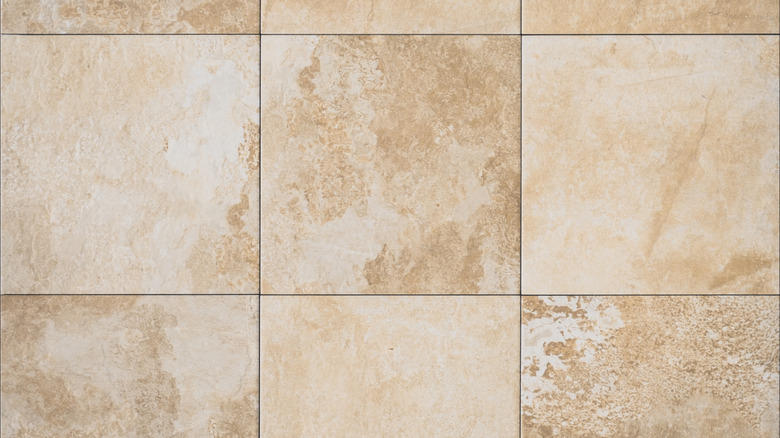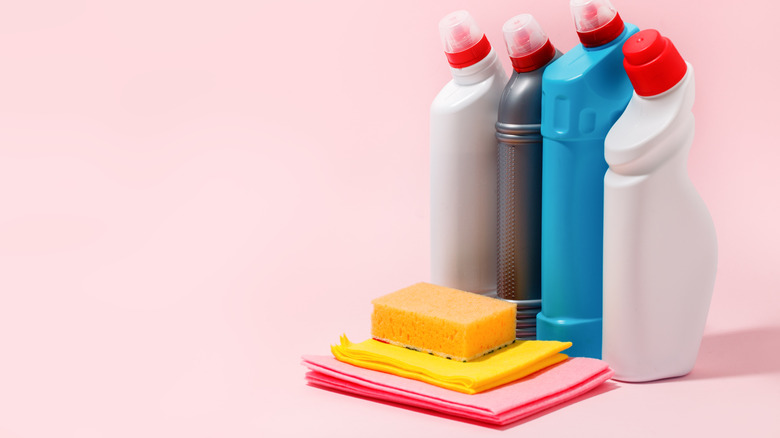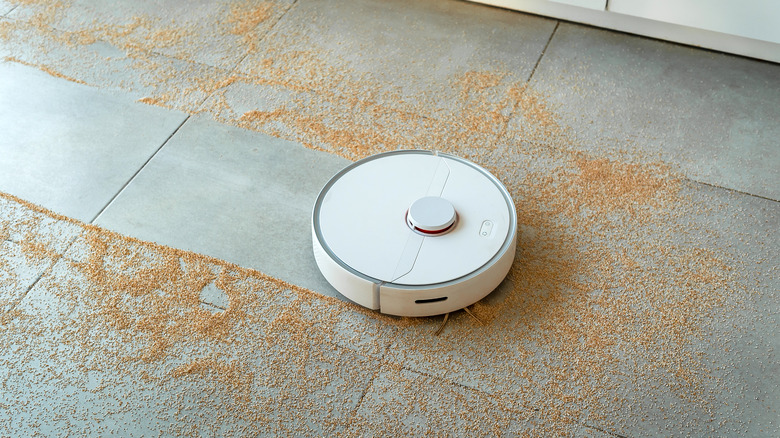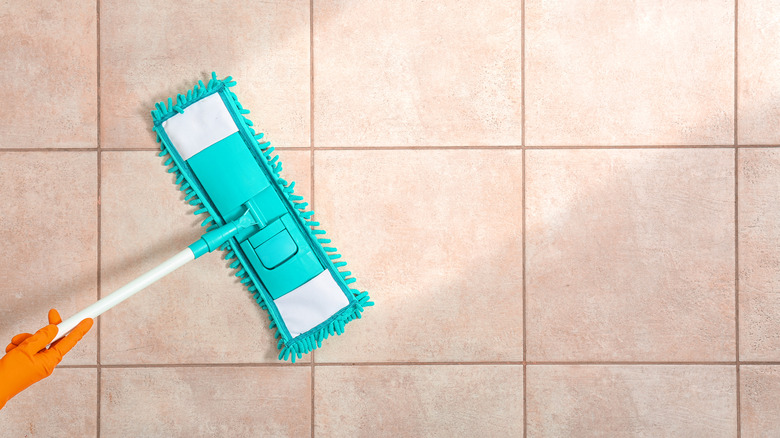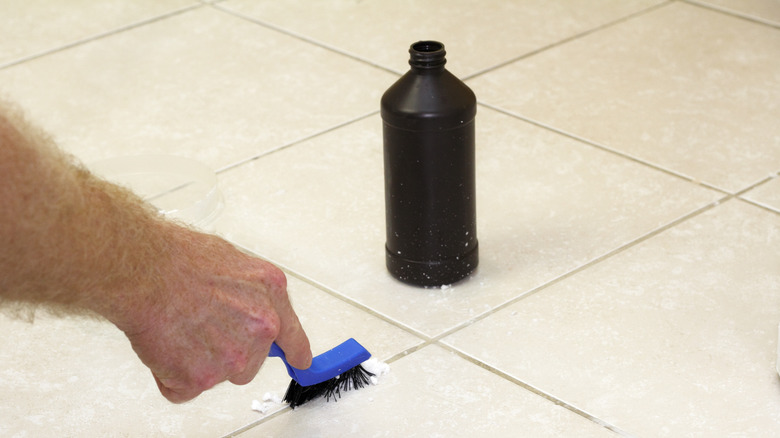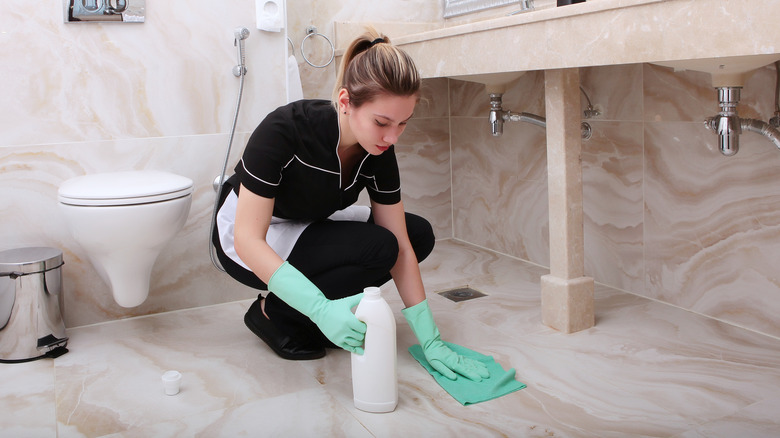The Best Way To Clean Your Travertine Flooring
When considering installing natural stone tiles, it is well established that they are a good investment. However, keeping them clean is quite different from other forms of tiles. Which leads us to the question, how does one clean natural stone tiles like marble, onyx, granite, and travertine? While some natural stone like marble and granite goes through a polishing process to become shiny, travertine, on the other hand, is 100% natural, which is specifically what makes the difference when cleaning.
Travertine is a porous material, which means tiny carbon dioxide bubbles were left behind while the stone was set. As a result, it's quite sensitive to certain chemicals seen in many cleaning products. This is because the porous surface makes it easy for cleaning liquids to soak in and settle inside the stone. Thus, travertine comes with a unique set of challenges for cleaning and maintenance, say the experts at Sefa Stone.
Despite the challenges, cleaning travertine is super simple if you use the right products and tools. Proper cleaning helps to ensure the tiles maintain their elegant appearance for as long as possible.
Choose a suitable product
When you clean natural stone with any type of chemical, remember to always do so with utmost care. Travertine tiles are capable of absorbing chemicals and liquids, which will then dull, discolor, or even damage the surface, says Cleanzen. Chemicals like bleach and ammonia should be kept far away from travertine floors. Your best option is to use a pH-neutral cleaner, which means the product isn't acidic or alkaline based and, consequently, isn't as harsh or abrasive. It's also safer for everyone to handle, claims Tile Doctor.
According to Oh So Spotless, using dish soap on travertine floors is an option, as long as it's done on occasion — like 3 or 4 times per year. While it isn't as harsh as other chemical cleaners, you should still avoid it for your regular cleaning schedule. One thing you shouldn't forget is to test any cleaning solutions before you start. Do a small spot test in an area that isn't all that visible to make sure the product is safe for you and the floor.
Sweep or vacuum the floor
When you're happy with your choice of cleaning product, the next step is to remove any dust and dirt. This will make the floors easier to clean, and the results a lot better. You can use either a broom, vacuum cleaner, or both. Abbey Floor Care states that sweeping a couple of times a week should be fine, but you might find yourself cleaning more often if you have a busy home. If you want to use a vacuum instead, exercise caution by using a vacuum that has a hard floor setting, and soft attachment to avoid scratches or damage.
While you can use a regular broom to collect dirt and dust, pick it up in a dustpan and throw it away. Our favorite tool, however, is a dust mop. Dust mops have a microfiber head or pad that glides over the floor effortlessly, explains Stone Care of Arizona. The microfibers attract fine dust, dirt, and hair that might be on the floor. After you're done, throw the pad in the washing machine, so that it's clean for the next use.
Mop
Most importantly — don't use a soaked mop. Ever. Wring the mop out as much as you can until it's only damp. This is because a soaked mop means excess water, and excess water can stain the stone, explains Out of Sight Cleaning.
Warm water cleans travertine floors best since it cuts through most soil and grease. Fill your bucket with warm water and add your cleaner. Read all of the instructions to ensure you use the product correctly. If you use dish soap, add only a small squirt to the warm water. While items like vinegar or citrus are popular day-to-day cleaning solutions, with the travertine floor, avoid them totally as their acid could cause your floors to go dull, writes Clean Natural.
While mopping, it's best to work your way back from the top of a room and mop your way out the door. That way, you won't walk on wet stone and bring in new dirt. Dip your mop and wring out the excess frequently. This will prevent streaks as the floor dries. Finally, turn on a ceiling fan or open the windows to help the floor dry faster.
Clean the grout
The grout lines on your travertine floor also require attention. The intensity does however depend on how long it's been since you've last given your flooring a good deep clean. You can either use a heavy-duty grout brush or a toothbrush. Merry Maids claim that a toothbrush will let you get into grout lines, cracks and crevices without scratching or damaging the surrounding stone.
Grout lines in travertine floors allow the individual tiles to expand or contract as the season and temperature change. It stops the tiles from rubbing against each other and cracking. However, Grout Magnificent, says that grout is also susceptible to discoloration, water damage, stains, and even mold.
Keep in mind that commercial grout cleaners can contain bleach. As we've said, bleach should not be used on travertine tile or grout as it can etch the natural stone. Instead, you can clean travertine grout lines using equal parts of water and baking soda, forming a paste. Scrub it into the lines using your toothbrush. Be sure to keep the paste and brush on the grout and away from the tile to prevent damage.
Disinfect, dry, and seal
If you have children or pets running around a lot, you might need to regularly disinfect your floors. Usually, this is done with a chemical like bleach or a product such as vinegar. However, we've already said those are two huge no-nos for travertine. To properly disinfect travertine floors, you can use mild, non-acidic dish soap. Add only about a tablespoon to a gallon of warm water and mop the floor following the above steps.
Using a soft cloth or towel, dry the floor as soon as possible to prevent streaks from forming. You can also leave the floor to air dry, but be sure to avoid walking on it until it fully dries off. On the other hand, you can let it mostly air dry, and use a dry cloth on any areas that are still wet.
Finally, every two years, apply a high-grade sealant to your travertine floors. Sealants come in two types, writes Elite Coatings – penetrating sealer and a surface sealer. While you could purchase just one, they are better used in conjunction to stop liquids from damaging the stone.
